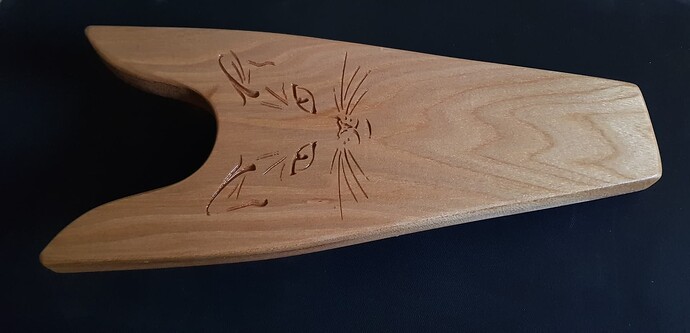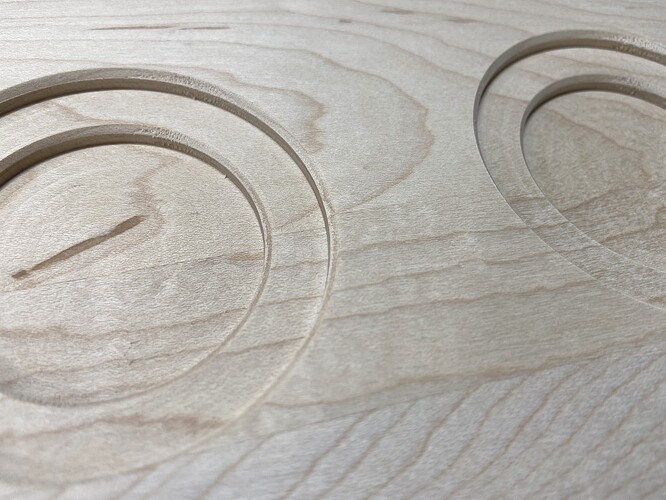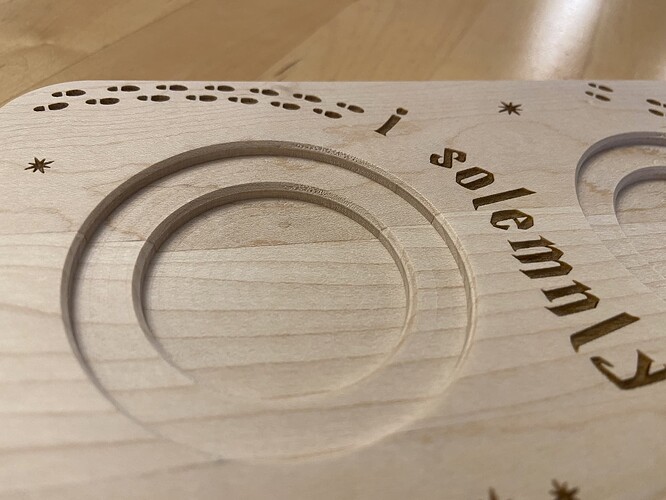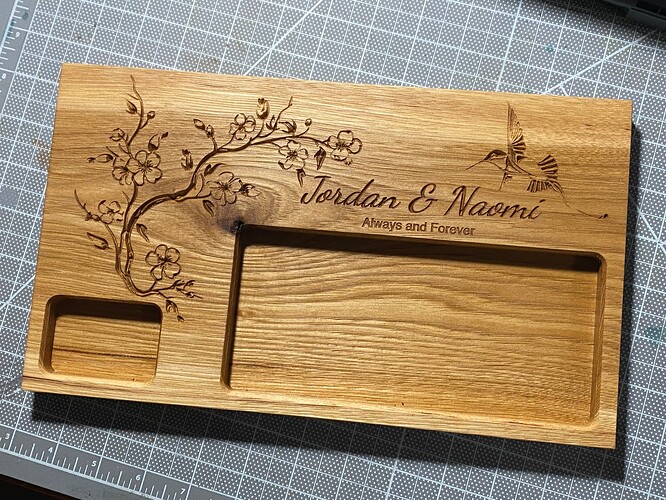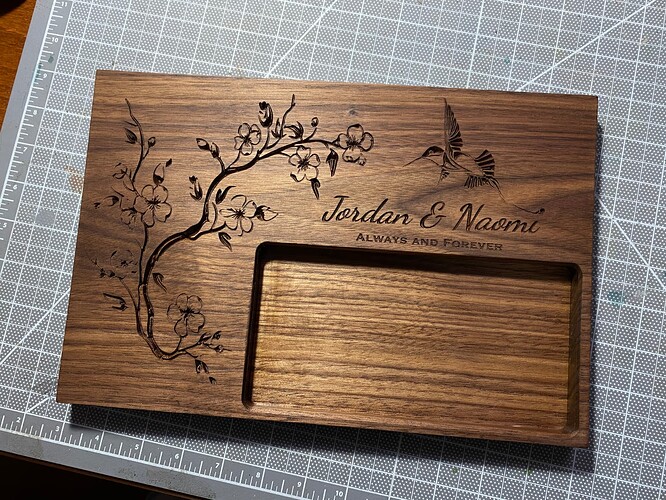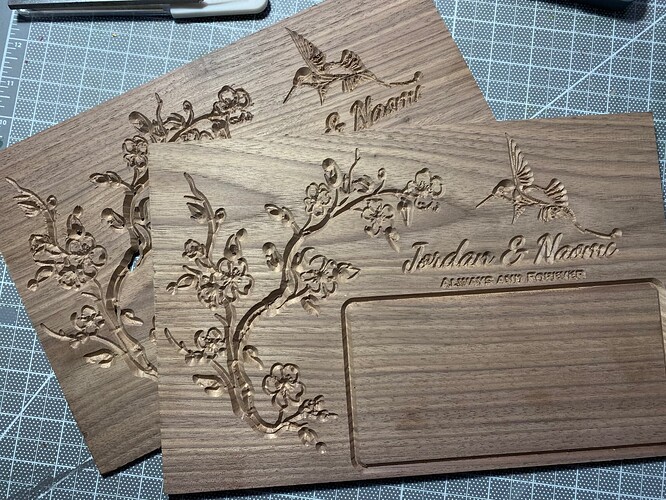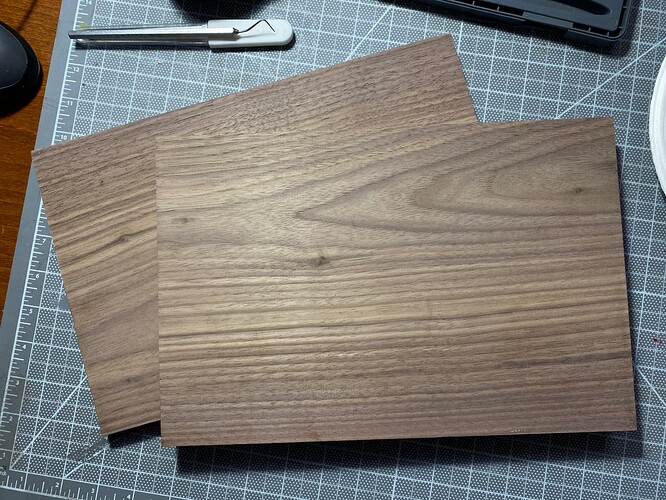I decided to execute a “redo” of my third project; this time with Walnut instead of Hickory. Also, I changed the design; I decided I did not like the smaller pocket, plus I wanted the cherry blossoms to present more prominently. Also altered the tool paths for the hummingbird to get better definition on the upper wing. I like this one much better.
However, on the way to this final success, here’s what happened. I had noticed that some of the line work on the first project was too light. So I prepared and installed an expensive piece of Walnut onto the waste board, then went back into Carbide Create and lowered the start depth of the cuts to .02 inches below the top surface.
After the job had been running a while I stopped it, because the resultant cuts looked absolutely awful: over blown and all detail lost. Fine! I mounted a second piece and adjusted the cuts to start right at .000 from the surface. I got the same results. What the heck! OMG, it took me two times to realize I had put the 90° cutter into the router instead of the 60°.
At $16.43 per board foot, there was no way I was tossing two boards. I used my bandsaw and ripped off .25 inches of the surface and managed to salvage two nice boards. I will use them for an upcoming project. After that brain-fart I gave serious consideration to changing my name from “Woodknot Carpenter” to “Knothead Carpenter”. Seriously?
Undaunted, I mounted the third board, this time making sure I had the 60° bit installed. Again, I started the cut at .000 inches from the top; and again the lines were too light on the artwork. I left the board attached in place on the machine, opened CC and adjusted the cuts to start at .005 inches below the surface, then reran the job, making sure all unneeded tool paths were “disabled”. Miracles of miracles they came out fantastic!
I think that might even be a viable technique: re-run the same cut but .005 of an inch deeper. The second cut cleaned up much of the feathering/tearout around the top edges and also netted much more detail on the flowers while still retaining their delicate nature. What was also conveniently awesome was I did not have to redo BitSetter calculations. The Shapeoko remembers that last used zeroed settings.
After that bit of carelessness on my part I decided to make myself a “Think Through” sheet or check list. As follows:
- Check your stock. Square? Flat and of consistent height? Measure with calipers. How thick is it exactly?
- Double check all tool paths and cuts in Carbide Create. Are feed rates compatible with the material you are carving?
- Check order of tools paths. Do lighter cuts first before heavier cuts? Do you have adequate tabs if there is a final cut out? What is start height of the cuts?
- Is stock completely fastened to waste board, especially in the Z direction?
- Is laptop fully charged? Are all settings correct so it will not go to sleep during the cut?
- Are all required bits for the job lined up and ready?
- Is the correct bit in the router? Are you sure? Double check.
- Dust collection squared away? All entanglements cleared?
- Machine initialized correctly? Did BitSetter calculate properly?
- Is the BitSitter detached from router? No wires or cables in the away?
- Is the bed cleared of tools, calipers, clamps, etc?
- Panic button ready in case of catastrophic event? Where is it?
- Take a breath, think through again, then start.
- Do not turn on your spindle until Carbide Motion asks for it. (Once lowered a spinning V-bit into the BitSitter button.
Whew! Four projects completed with lots of wrong iterations in between. Oh well; I guess that’s why it’s called a “learning curve”. And yes, I’m still the Woodknot Carpenter. Take care!

